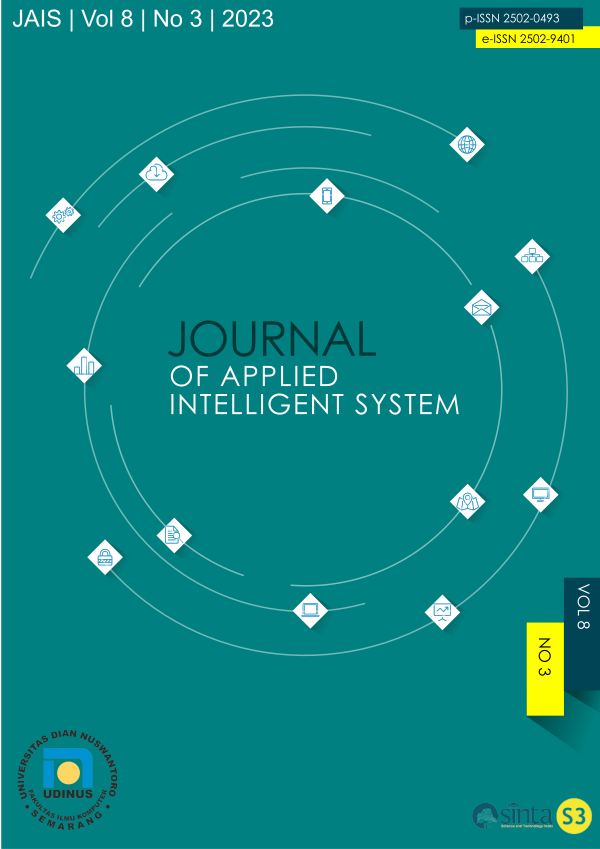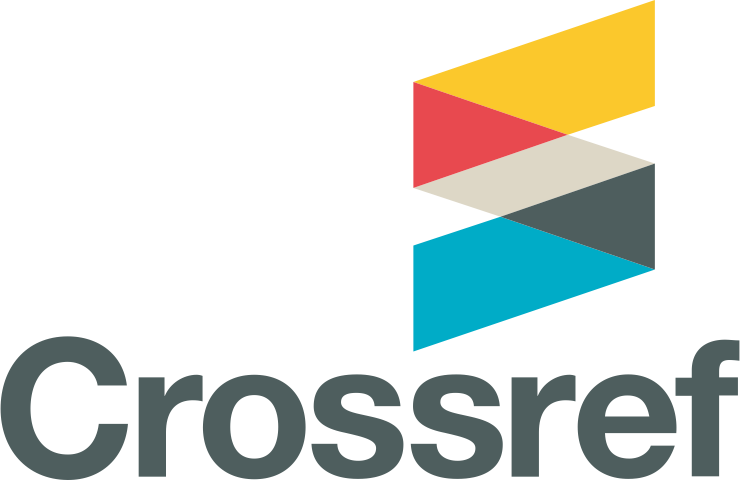Road Crack Detection using Yolo-V5 and Adaptive Thresholding
DOI:
https://doi.org/10.33633/jais.v8i3.9437Abstract
Road crack detection is a critical aspect of infrastructure maintenance, ensuring the safety and durability of roadways. This study presents an innovative approach leveraging image processing techniques, YOLO-V5 model, and adaptive thresholding for efficient and accurate road crack detection. The utilization of adaptive thresholding enables the system to handle complex lighting variations and diverse road textures, enhancing the precision of crack identification. Integrating the YOLO-V5 model further facilitates real-time detection and precise localization of road crack regions, contributing to effective and timely maintenance strategies. The research findings underscore the robustness and efficacy of the proposed methodology, emphasizing its potential for enhancing road safety and durability.References
S. Shurrab and R. Duwairi, “Self-supervised learning methods and applications in medical imaging analysis: a survey,” PeerJ Comput Sci, vol. 8, 2022, doi: 10.7717/PEERJ-CS.1045.
A. F. A. Fernandes, J. R. R. Dórea, and G. J. de M. Rosa, “Image Analysis and Computer Vision Applications in Animal Sciences: An Overview,” Frontiers in Veterinary Science, vol. 7. Frontiers Media S.A., Oct. 21, 2020. doi: 10.3389/fvets.2020.551269.
S. R. Waheed, N. M. Suaib, M. S. Mohd Rahim, M. Mundher Adnan, and A. A. Salim, “Deep Learning Algorithms-based Object Detection and Localization Revisited,” in Journal of Physics: Conference Series, IOP Publishing Ltd, May 2021. doi: 10.1088/1742-6596/1892/1/012001.
T. Czimmermann et al., “Visual-based defect detection and classification approaches for industrial applications—A SURVEY,” Sensors (Switzerland), vol. 20, no. 5. MDPI AG, Mar. 01, 2020. doi: 10.3390/s20051459.
H. S. Munawar, A. W. A. Hammad, A. Haddad, C. A. P. Soares, and S. T. Waller, “Image-based crack detection methods: A review,” Infrastructures, vol. 6, no. 8. MDPI AG, Aug. 01, 2021. doi: 10.3390/infrastructures6080115.
V. Kakani, V. H. Nguyen, B. P. Kumar, H. Kim, and V. R. Pasupuleti, “A critical review on computer vision and artificial intelligence in food industry,” Journal of Agriculture and Food Research, vol. 2. Elsevier B.V., Dec. 01, 2020. doi: 10.1016/j.jafr.2020.100033.
H. S. Munawar, A. W. A. Hammad, A. Haddad, C. A. P. Soares, and S. T. Waller, “Image-based crack detection methods: A review,” Infrastructures, vol. 6, no. 8. MDPI AG, Aug. 01, 2021. doi: 10.3390/infrastructures6080115.
R. Sizyakin, V. Voronin, N. Gapon, and A. Pižurica, “A deep learning approach to crack detection on road surfaces.”
W. Wang, L. Li, and F. Zhang, “Crack image recognition on fracture mechanics cross valley edge detection by fractional differential with multi-scale analysis,” Signal Image Video Process, vol. 17, no. 1, pp. 47–55, Feb. 2023, doi: 10.1007/s11760-022-02202-6.
Z. Azouz, B. Honarvar Shakibaei Asli, and M. Khan, “Evolution of Crack Analysis in Structures Using Image Processing Technique: A Review,” Electronics (Basel), vol. 12, no. 18, p. 3862, Sep. 2023, doi: 10.3390/electronics12183862.
P. Gupta and M. Dixit, “Image-based crack detection approaches: a comprehensive survey,” Multimed Tools Appl, vol. 81, no. 28, pp. 40181–40229, Nov. 2022, doi: 10.1007/s11042-022-13152-z.
“Crack Segmentation Datasets.” Accessed: Nov. 06, 2023. [Online]. Available: https://www.kaggle.com/datasets/lakshaymiddha/crack-segmentation-dataset
S. Raveendran, M. D. Patil, and G. K. Birajdar, “Underwater image enhancement: a comprehensive review, recent trends, challenges and applications,” Artif Intell Rev, vol. 54, no. 7, pp. 5413–5467, Oct. 2021, doi: 10.1007/s10462-021-10025-z.
V. Narayan, P. K. Mall, A. Alkhayyat, K. Abhishek, S. Kumar, and P. Pandey, “Enhance-Net: An Approach to Boost the Performance of Deep Learning Model Based on Real-Time Medical Images,” J Sens, vol. 2023, 2023, doi: 10.1155/2023/8276738.
Y. Hou et al., “The State-of-the-Art Review on Applications of Intrusive Sensing, Image Processing Techniques, and Machine Learning Methods in Pavement Monitoring and Analysis,” Engineering, vol. 7, no. 6. Elsevier Ltd, pp. 845–856, Jun. 01, 2021. doi: 10.1016/j.eng.2020.07.030.
U. A. Nnolim, “Automated crack segmentation via saturation channel thresholding, area classification and fusion of modified level set segmentation with Canny edge detection,” Heliyon, vol. 6, no. 12, Dec. 2020, doi: 10.1016/j.heliyon.2020.e05748.
C. Chen, H. Seo, C. H. Jun, and Y. Zhao, “A potential crack region method to detect crack using image processing of multiple thresholding,” Signal Image Video Process, vol. 16, no. 6, pp. 1673–1681, Sep. 2022, doi: 10.1007/s11760-021-02123-w.
C. Liu, H. Sui, J. Wang, Z. Ni, and L. Ge, “Real?Time Ground?Level Building Damage Detection Based on Lightweight and Accurate YOLOv5 Using Terrestrial Images,” Remote Sens (Basel), vol. 14, no. 12, Jun. 2022, doi: 10.3390/rs14122763.
T. Diwan, G. Anirudh, and J. V. Tembhurne, “Object detection using YOLO: challenges, architectural successors, datasets and applications,” Multimed Tools Appl, vol. 82, no. 6, pp. 9243–9275, Mar. 2023, doi: 10.1007/s11042-022-13644-y.
A. Rahati and K. Rahbar, “Sports movements modification based on 2D joint position using YOLO to 3D skeletal model adaptation,” Technology Journal of Artificial Intelligence and Data Mining, vol. 10, no. 4, pp. 549–557, 2022, doi: 10.22044/jadm.2022.11975.2344.
Downloads
Published
Issue
Section
License
Copyright (c) 2023 Heri Suhendar

This work is licensed under a Creative Commons Attribution-NonCommercial 4.0 International License.
- Authors retain copyright and grant the journal right of first publication with the work simultaneously licensed under a Creative Commons Attribution License that allows others to share the work with an acknowledgment of the work's authorship and initial publication in this journal.
- Authors are able to enter into separate, additional contractual arrangements for the non-exclusive distribution of the journal's published version of the work (e.g., post it to an institutional repository or publish it in a book), with an acknowledgment of its initial publication in this journal.
- Authors are permitted and encouraged to post their work online (e.g., in institutional repositories or on their website) prior to and during the submission process, as it can lead to productive exchanges, as well as earlier and greater citation of published work (See The Effect of Open Access).









